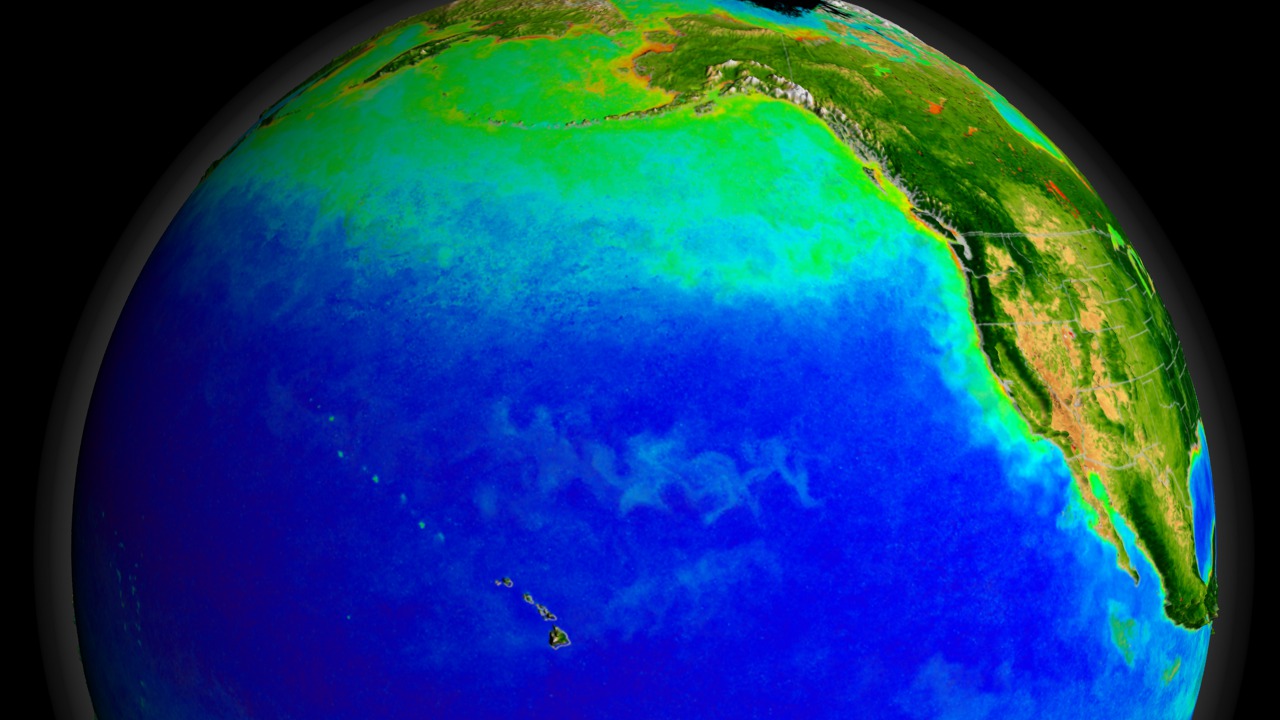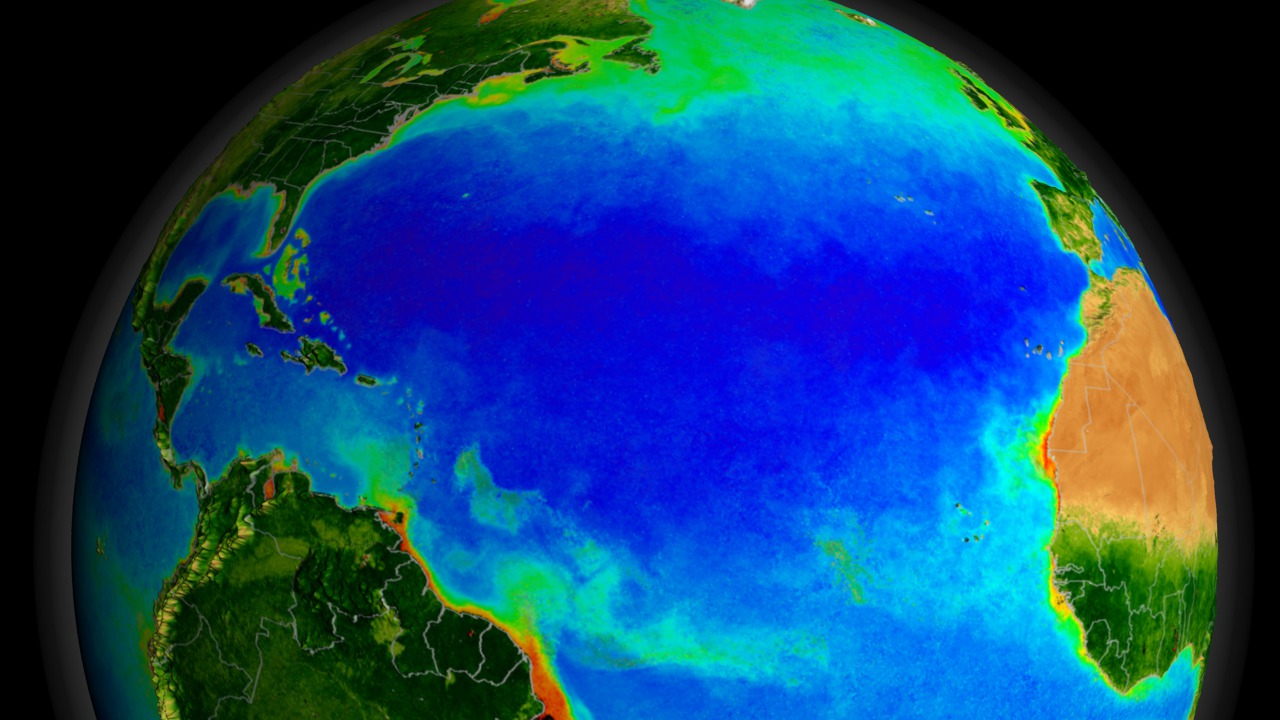Super Blooms
Turbulent storms churn the ocean in winter, adding nutrients to sunlit waters near the surface. This sparks a feeding frenzy each spring that gives rise to massive blooms of phytoplankton. Tiny molecules found inside these microscopic plants harvest vital energy from sunlight through photosynthesis. The natural pigments, called chlorophyll, allow phytoplankton to thrive in Earth's oceans and enable scientists to monitor blooms from space. Satellites reveal the location and abundance of phytoplankton by detecting the amount of chlorophyll present in coastal and open waters—the higher the concentration, the larger the bloom. Observations show blooms typically last until late spring or early summer, when nutrient stocks are in decline and predatory zooplankton start to graze. The visualization below uses NASA SeaWiFS data to map bloom populations in the North Atlantic and North Pacific oceans from March 2003 to October 2006.

Marine plants multiply and take over the seas.
Red, orange, yellow and green represent areas where blooms abound. Blue patches represent nutrient-poor zones where blooms exist in low numbers.

The upwelling of nutrient-rich waters off the coast of California provide phytoplankton with essential minerals, allowing massive blooms to form.

Similar upwelling events yield dense blooms off North Africa's coast.

Rivers, such as the Amazon, deposit nutrients from land into South America's tropical ocean waters, leading to thick blooms along the coastline.

Blooms flourish in a dark plume of nutrient-rich water pouring from the mouth of the Amazon River, as seen by NASA's Aqua satellite.
Credits
Please give credit for this item to:
NASA's Goddard Space Flight Center
-
Animators
-
Alex Kekesi
(Global Science and Technology, Inc.)
- Lori Perkins (NASA/GSFC)
-
Alex Kekesi
(Global Science and Technology, Inc.)
-
Video editor
- Kayvon Sharghi (USRA)
-
Scientists
- Gene Feldman (NASA/GSFC)
- Michael Behrenfeld (Oregon State University)
-
Writer
- Kayvon Sharghi (USRA)
Release date
This page was originally published on Tuesday, May 8, 2012.
This page was last updated on Wednesday, May 3, 2023 at 1:53 PM EDT.


